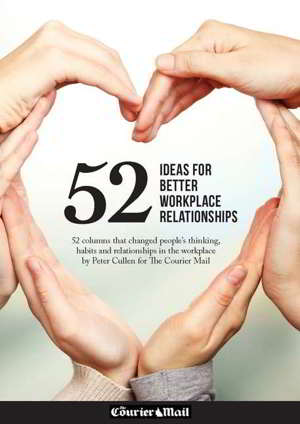Peter Cullen is currently the author of the Career Doctor articles appearing in the Institute of Managers and Leaders publication named Leadership Matters. The columns on this page have appeared in Leadership Matters. Peter also wrote a weekly column on Workplace Behaviour for the Courier Mail in Queensland. The ebook containing the Courier Mail articles is a free download.
Conflict in strategy
Managing conflict during the strategy setting process
How can you use conflict or conscious disruption during the development of the strategic plan for the company, business unit or team to achieve the best possible outcome?
You may call it conflict or conscious disruption, the main point being it should be encouraged instead of dismissed or shut down. Why? Because it automatically challenges everyone’s thinking, current process and methodology to arrive at or improve on a desired outcome. Think of Apple, Google or the very successful Australian company Atlassian. There is no point in continuing to do the same thing the same way to achieve the same or slightly better result.
There are always certain fundamental components that should be part of any strategy document. How you get there can be very different from one business to another. I have a preference at the very start of the strategy development process to provide some guidelines of engagement that ensures all ideas and contributions are welcome with the capacity to intentionally and respectfully challenge each other with the potential to create conflict. Why? Because it helps us to explore areas not previously considered. It offers opportunity for engagement, recognition and the potential to achieve greater outcomes. The strategy development sessions will be far more robust energetic and alive.
The chair of the session needs to be more of a facilitator with a focus on direction and contribution than managing a process. All contributions need to be explored to varying degrees. Some will be too off the wall whilst others will hit the nail on the head or lie somewhere in between. The point is, all contributions may be game changers.
Open ended brainstorming is a great way to start followed by open challenges of each contribution. The facilitator and the participants need to ensure they ask challenging or curious questions like How would that work? Can you tell me more about that? What else can you think of? What would be the opposite to that? How can we make that work? Who else would need to be involved? Ask how or why 3 to 5 times to really flesh it out. There is often a need to follow the trail like this to determine the validity of any potentially good idea.
I was fortunate enough to be part of a great team at Singapore Airlines in the 1980’s where it was normal to be open, honest and respectful and to challenge each other and management on decisions and direction. We did not always accept or take for granted what we were told as being for the best or in fact correct. Importantly, our thoughts were sought and we were encouraged to question. It was ok to create respectful conflict as it stimulated us and our thinking. Most importantly, it provided the space for us to create brand awareness and a business development team that was second to none.
To this day, I am very proud and grateful for my time with this very creative, collaborative and cohesive team of people.
Recent articles
- What Should You Do When A Manager Treats Staff Badly?
- An Aim Specialist Takes A Problem To Task
- 5 Practical Ways A New Leader Can Make A Positive Impact
- Bouncing back When 360-degree feedback is Hard to Take
- Choose a Candidate
Tags
FREE eBOOK OFFER

REGISTER your details to receive a copy of my eBook, "52 Ideas for Better Workplace Relationships"
